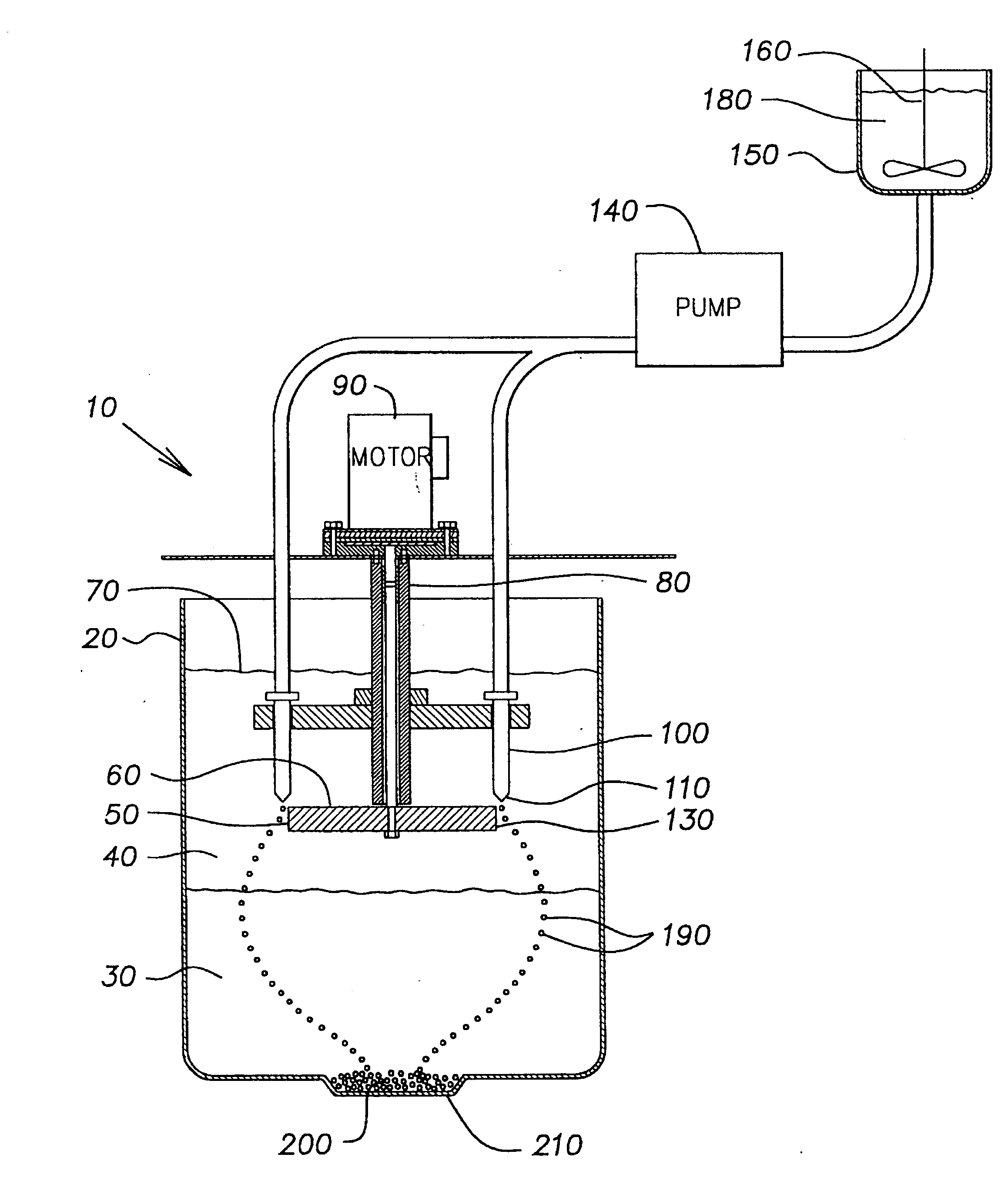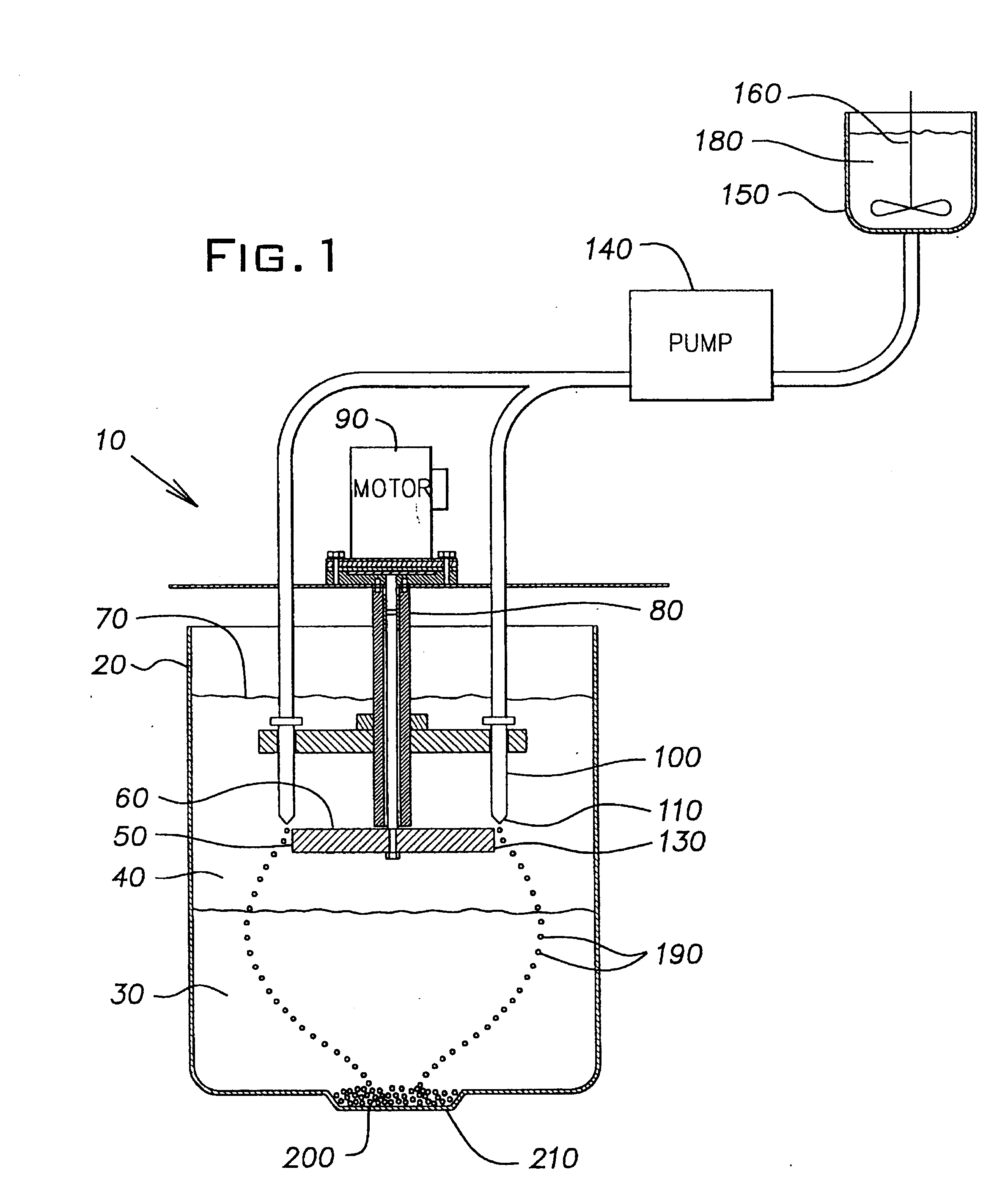Method of forming ceramic beads
a technology of ceramic beads and spherical beads, which is applied in the field of substantially spherical ceramic beads, can solve the problems of difficulty in obtaining ceramic beads having a substantially mono-modal size distribution, the limitation and drawbacks of prior art methods of forming ceramic beads, and the requirement of additional processing
- Summary
- Abstract
- Description
- Claims
- Application Information
AI Technical Summary
Benefits of technology
Problems solved by technology
Method used
Image
Examples
example ii
An alginate solution was prepared by mixing 2 g. ammonium alginate powder with 64 g. distilled water in a high shear mixer. The alginate solution was allowed to hydrate for 24 hours. A slurry was prepared by mixing:
(i) 66 g. of the alginate solution;
(ii) 275 g. of a ceramic powder consisting of 100% by weight commercial quality ceria stabilized tetragonal zirconia particulates (Ce-TZP) having an average particle size of 0.5 .mu.m;
(iii) 50 g. distilled water; and
(iv) 2.5 g. of a dispersant available from Zschimmer und Schwarz GmbH & Co. Chemische Fabriken, Lahnstein, Germany as DOLAPIX PC33.
The slurry was milled in an Attritor mill for 1 hour using 1650 g. of 3 mm yttria stabilized zirconia media.
The slurry was pumped into mineral spirits using the same apparatus and conditions as described in Example 1, except that the disk was rotated at 200 rpm and the flow rate of the slurry through the orifice in the nozzle tip was 8 ml / min. The rigid beads formed in the calcium chloride solutio...
example iii
An alginate solution was prepared by mixing 3 g. ammonium alginate powder with 97 g. distilled water in a high shear mixer. The alginate solution was allowed to hydrate for 24 hours. A slurry was prepared by mixing:
(i) 100 g. of the alginate solution;
(ii) 300 g. of a ceramic powder consisting of 88% by weight zircon powder (1 .mu.m average), 3% by weight of a glass frit sold by Ferro Corporation under the trade designation 3851, and 9% by weight colloidal silica sold by Nalco as AG1050;
(iii) 30 g. distilled water; and
(iv) 3 g. of a dispersant available from R. T. Vanderbilt as DARVAN 821-A.
The slurry was milled in an Attritor mill for 1 hour using 1650 g. of 3 mm yttria stabilized zirconia media.
The slurry was pumped into mineral spirits using the same apparatus and conditions as described in Example 1. The rigid beads formed in the calcium chloride solution were washed and dried as described in Example 1, and then fired in a high temperature alumina sagger at 1525.degree. C. for 1 ...
example iv
An alginate solution was prepared by mixing 3 g. ammonium alginate powder with 97 g. distilled water in a high shear mixer. The alginate solution was allowed to hydrate for 24 hours. A slurry was prepared by mixing:
(i) 100 g. of the alginate solution;
(ii) 300 g. of a ceramic powder consisting of 88% by weight zircon powder (1 .mu.m average), 6% by weight of a ball clay sold under the trade designation as HUBER J2, 5% by weight colloidal silica sold by Nalco as AG1050, and 2% by weight talc;
(iii) 30 g. distilled water; and
(iv) 3 g. of a dispersant available from R. T. Vanderbilt as DARVAN 821-A.
The slurry was milled in an Attritor mill for 1 hour using 1650 g. of 3 mm yttria stabilized zirconia media.
The slurry was pumped into mineral spirits using the same apparatus and conditions as described in Example 1. The rigid beads formed in the calcium chloride solution were washed and dried as described in Example 1, and then fired in a high temperature alumina sagger at 1525.degree. C. fo...
PUM
| Property | Measurement | Unit |
|---|---|---|
| sphericity | aaaaa | aaaaa |
| diameter | aaaaa | aaaaa |
| diameter | aaaaa | aaaaa |
Abstract
Description
Claims
Application Information
 Login to View More
Login to View More - R&D
- Intellectual Property
- Life Sciences
- Materials
- Tech Scout
- Unparalleled Data Quality
- Higher Quality Content
- 60% Fewer Hallucinations
Browse by: Latest US Patents, China's latest patents, Technical Efficacy Thesaurus, Application Domain, Technology Topic, Popular Technical Reports.
© 2025 PatSnap. All rights reserved.Legal|Privacy policy|Modern Slavery Act Transparency Statement|Sitemap|About US| Contact US: help@patsnap.com



